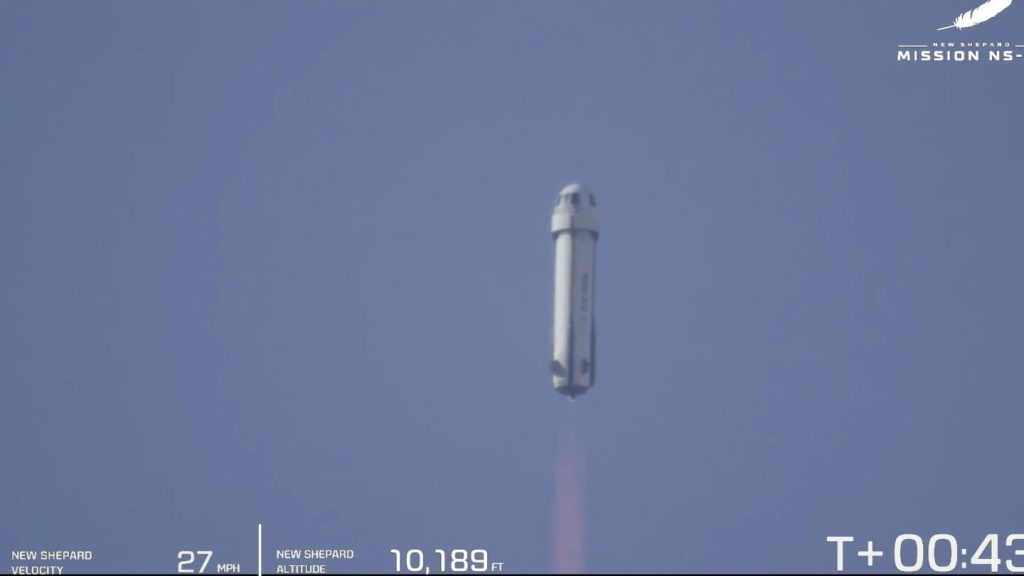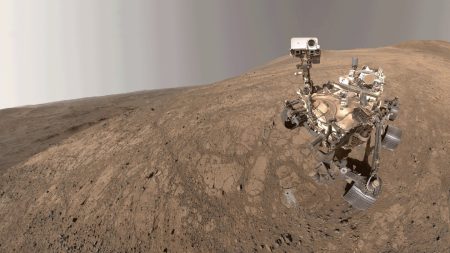Blue Origin, the spaceflight company founded by Jeff Bezos, successfully executed a suborbital mission aimed at simulating lunar gravity for a collection of NASA-sponsored experiments. Launched from West Texas aboard the New Shepard rocket, the capsule carrying the payload reached the edge of space, where it engaged in a series of maneuvers to replicate the gravitational pull of the moon, approximately one-sixth that of Earth. This marked Blue Origin’s inaugural attempt at generating artificial lunar gravity during a spaceflight, a crucial step towards streamlining the development and testing of lunar technologies. The brief, 10-minute flight concluded with the safe landing of both the rocket booster and the experiment capsule, the latter returning to Earth via parachute.
This mission represented a critical advancement in NASA’s lunar exploration preparations. By subjecting instruments and technologies to a simulated lunar environment during short, cost-effective suborbital flights, researchers can identify and address potential issues before deploying them on actual lunar missions. This approach significantly reduces the risks and costs associated with lunar surface operations. The experiments flown on this mission centered on various aspects of lunar exploration, including dust mitigation strategies for spacesuits and equipment, a crucial factor for preserving the integrity and functionality of these critical resources on the dusty lunar surface.
Blue Origin’s foray into artificial gravity generation is not limited to lunar applications. The company envisions using similar spaceflight profiles to simulate the gravitational environments of Mars and other celestial bodies within our solar system. This capability opens doors for a broader range of scientific research and technological development relevant to future planetary exploration endeavors. The ability to recreate diverse gravitational environments in a controlled setting provides a valuable testing ground for equipment designed for various planetary surfaces, ensuring their effectiveness and reliability in challenging extraterrestrial conditions.
The New Shepard rocket, utilized for this mission, plays a dual role in Blue Origin’s spaceflight operations. It alternates between carrying paying passengers on brief suborbital excursions and transporting scientific payloads, like the lunar gravity experiments, to the edge of space. This versatility demonstrates the rocket’s adaptability and its contribution to both commercial space tourism and scientific research. While New Shepard focuses on suborbital missions, Blue Origin is also developing a more powerful orbital-class rocket, New Glenn, which recently completed its maiden launch from Cape Canaveral, Florida. New Glenn represents Blue Origin’s ambition to expand its reach into heavier payload launches and orbital missions, further solidifying its presence in the evolving landscape of space exploration and commerce.
The collaboration between Blue Origin and NASA on this lunar gravity experiment highlights the increasing synergy between private space companies and government agencies in advancing space exploration. This partnership leverages the innovative capabilities of the private sector with the scientific objectives of NASA, creating a mutually beneficial relationship that accelerates the pace of space research and development. Blue Origin’s contribution, in this instance, provides a crucial testing platform for lunar technologies, enabling NASA to refine its approach to lunar exploration and mitigate potential risks before committing to costly and complex surface missions.
This successful test flight represents a significant step towards enabling future lunar and planetary exploration. The ability to simulate diverse gravitational environments in a controlled setting significantly enhances the research and development process for space technologies. This innovative approach reduces cost and risk while accelerating the pace of space exploration, paving the way for humanity’s expansion beyond Earth. The continued collaboration between private entities like Blue Origin and government agencies like NASA promises to further propel these endeavors, ushering in a new era of scientific discovery and human presence in the cosmos.










